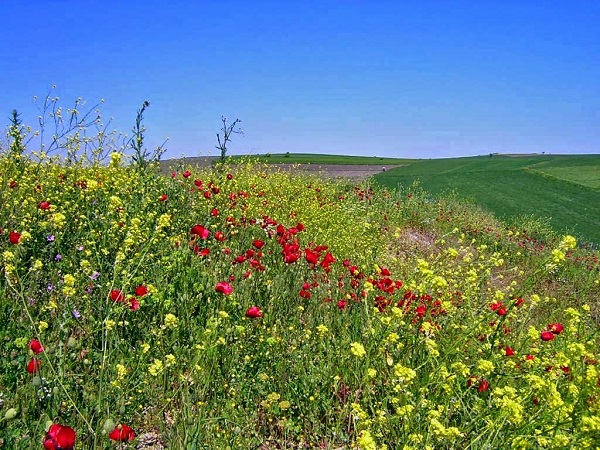Elder Ieronymos Simonopetritis, the Tireless Spiritual Guide
10 May 2019[Previous post: http://bit.ly/2YbDve8]
His courtesy, perfect obedience and respect for the monastery and its overseers continued throughout his long life. His great progress in the monastery, the felicitous conclusion of all the tasks assigned to him and, particularly, his modesty, gentleness and virtue in general made him, on the one hand, well-liked and respected, but on the other, as is often the case, also made him the object of jealousy, envy and pettiness. His answer was always silence and forbearance.
At the monastery they would see his lamp burning all evening long. The older monks used to say they never saw him lying down. Whatever time you went to see him, you’d find him on his feet or sitting. He slept in his chair. Too much sleep reduces our love for God. In the morning you’d see him at the service, in his prayer-stall, or singing, reading, directing the service. One Elder recalls: ‘He’d check up on us. I’d go to the stalls at the back, so that he wouldn’t see me, because I was ashamed of myself’. And he was very strict with his fasting. He never ate anything except at the appointed meal-times. Whenever he was at the monastery, he never missed a service. Nor did he eat all his ration in the refectory. Usually he’d do the reading during the meal and then eat afterwards, so as to hide what he was doing. According to Papa-Efthymios, whenever he returned from outside the Mountain, he’d go for days without oil, in order to make up for any infringement of the fasting rules. His spiritual struggles were many and varied, but he kept them to himself.

Wild flowers such as these were used at Simonopetra to decorate the Winding-Sheet on Great Friday.
On his return from his travels, he didn’t stop working. He would write in the secretary’s office and in his cell, organize the library and archives, and study. He served in church and took part in common tasks. No duty was beneath him, which is why God elevated him.
In 1910, he was in Athens for about six months, as steward at the dependency of Analipseos [the Transfiguration]. In his correspondence with the monastery, he tried to persuade the brotherhood not to sell the dependency. His forecast of a future recovery for the monastery was soon borne out. It was here that he first became acquainted with the congregation at the church and this relationship would later blossom and bear fruit.
In 1911, on his return to the Holy Mountain, he survived a shipwreck, attributing his escape to divine providence.
He found great support in the relationship he developed with the saints of the Church. We’ve already seen his relationship with Saint Dimitrios and the cure effected by the latter for him. But he also had special affection for Saint John the Theologian. He’d had a hernia from an early age, which he took care of himself, though it wasn’t at all easy for him. He later wrote: ‘I was cured quite painlessly, without medication or an operation’. His cure came at the vigil for the feast of Saint John, 26 September. ‘I’d made the sign of the cross and called upon the saint, then went to the choir stall to start singing “Lord, I have cried”. Just then I felt the hernia disappear, and it hasn’t bothered me since. I was cured miraculously, by the invocation of the Theologian, whose wonder-working grace and help I gladly confess, praising God who is awe-inspiring in His saints. My cure was effected in 1897’. The Saint also visited him at another vigil and freed him of intense impure thoughts. Thereafter he was never again afflicted by this passion and such thoughts.
His love for the saints was so great that it pleased God that he should meet the most ascetic Saint Parthenios of Chios shortly before the latter’s demise. He was connected, in personal friendship, with Saint Nektarios, Saint Savvas the New of Kalymnos, and Saint Nicholas Planas.
This intense love of his for the saints found poetic expression through the gift he had from God of singing and writing hymns. So it was that, immediately after his tonsure, in 1893, at the age of 22, he wrote eight canons, one in each tone, to ‘our holy and God-bearing father Simon, from whose relics myrrh flows’, as substitutes for those lost in the fire of1891. In 1896, he composed a supplicatory canon to the monastery’s saints, Simon of the Rock [from whom the monastery takes its name]* and Mary Magdalene [her left arm is kept at the monastery]. These he published in 1924, together with musical settings for their services and the eight canons he’d written to Saint Simon.






